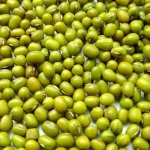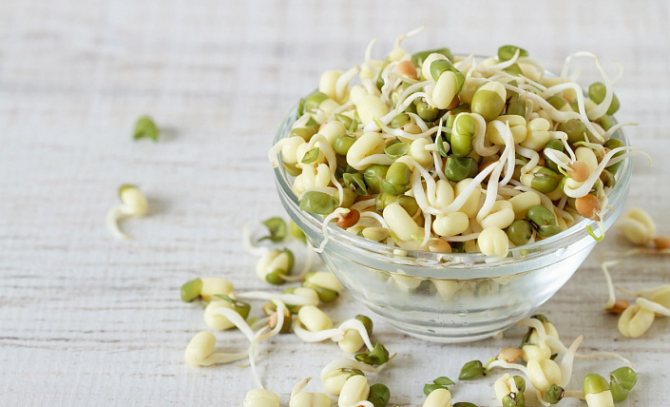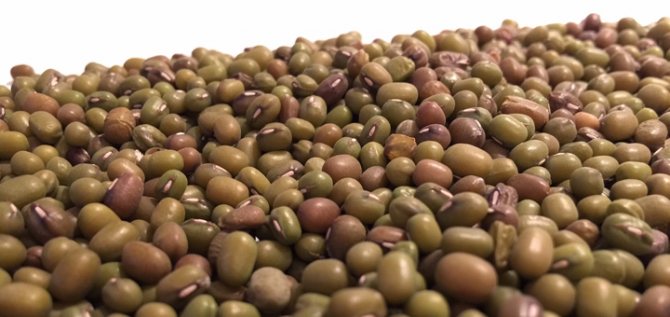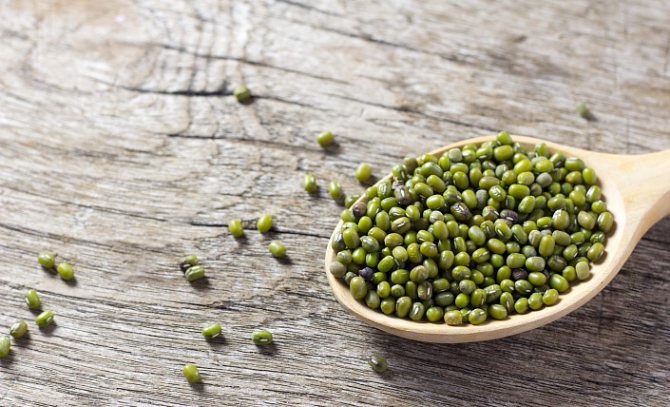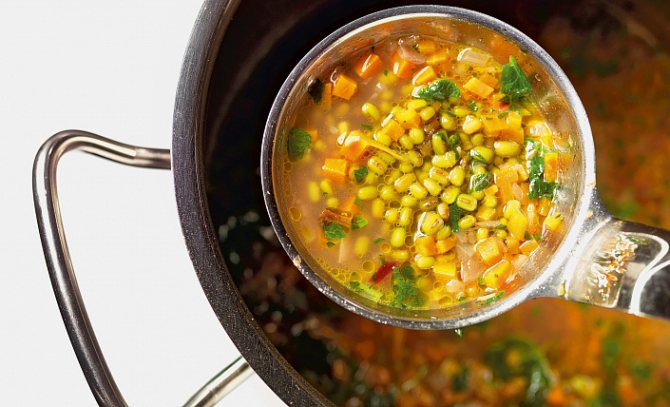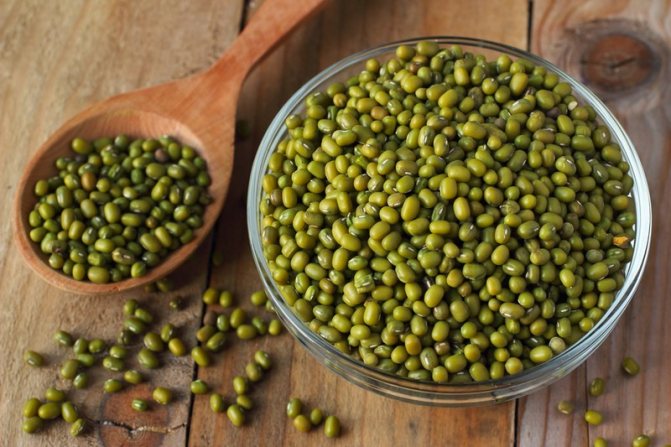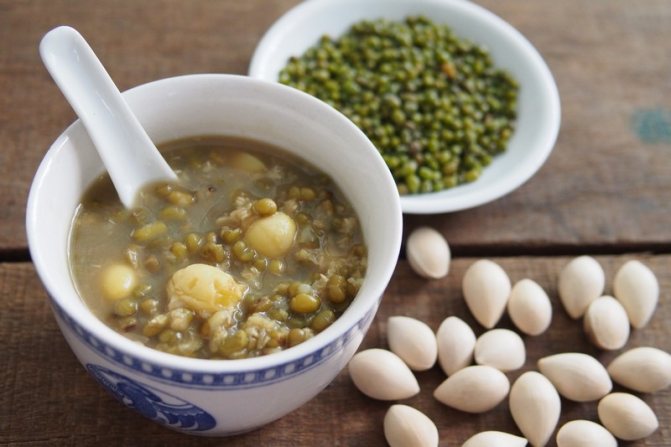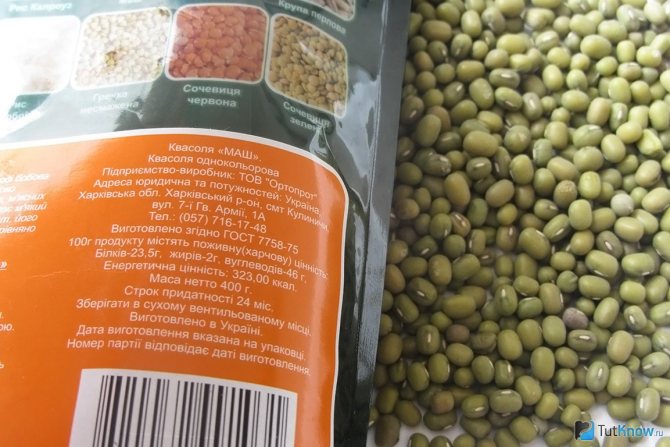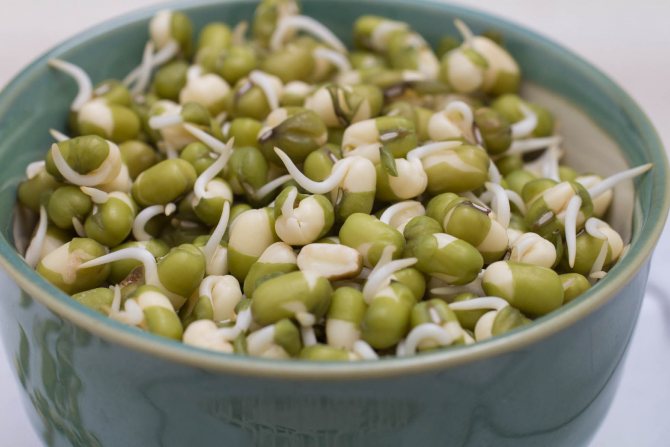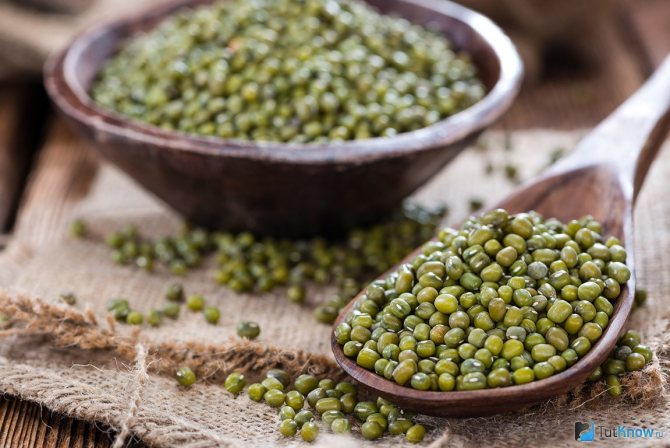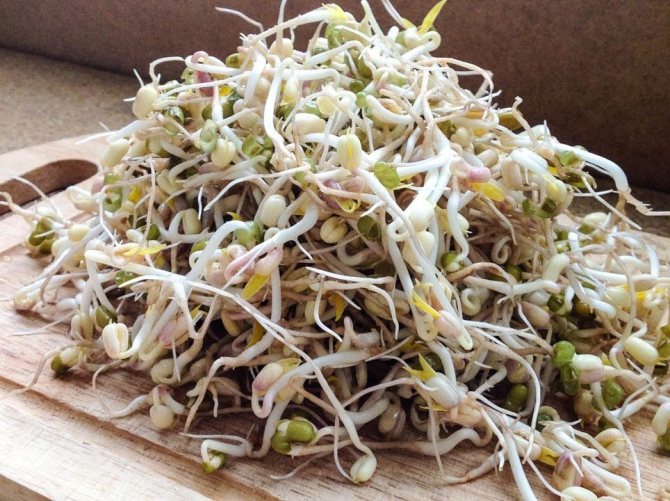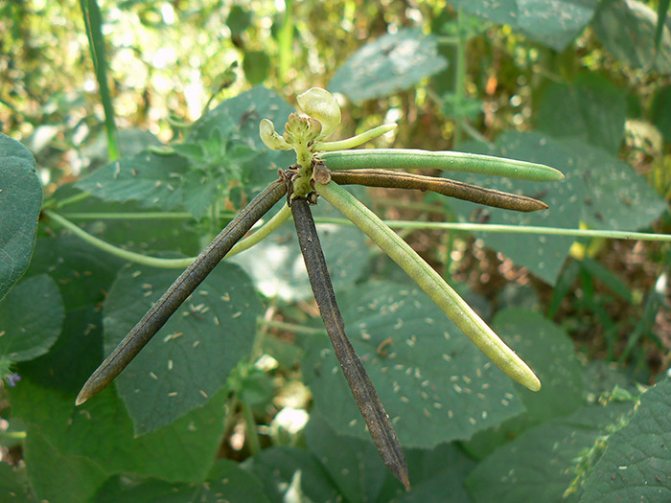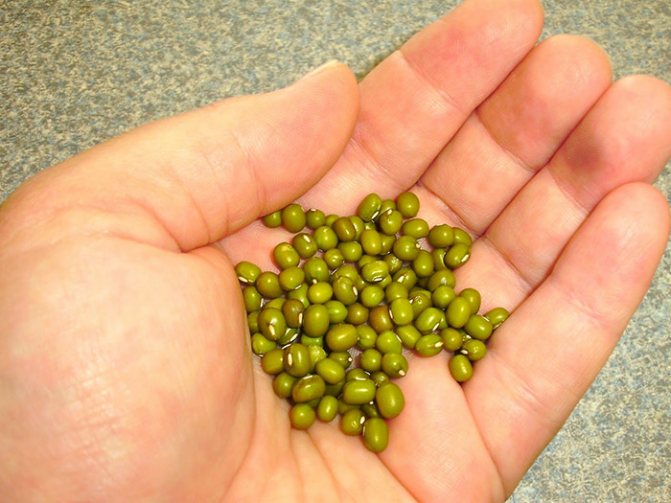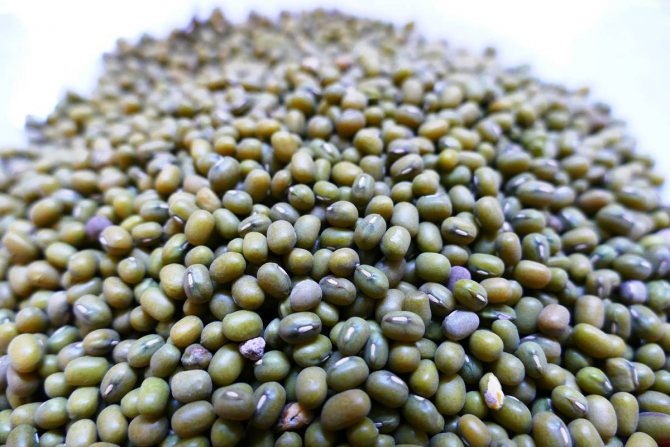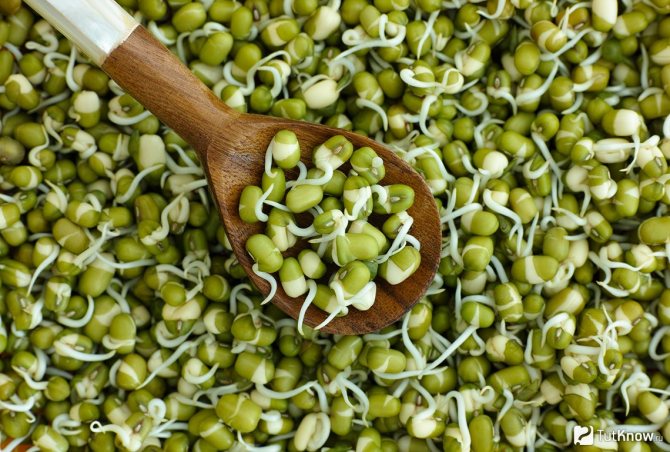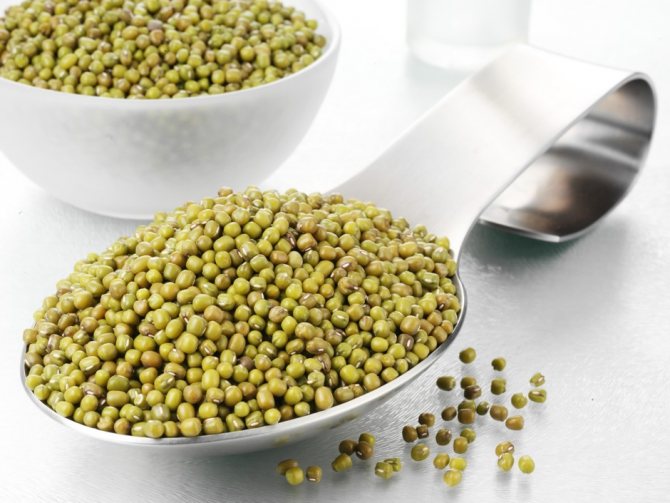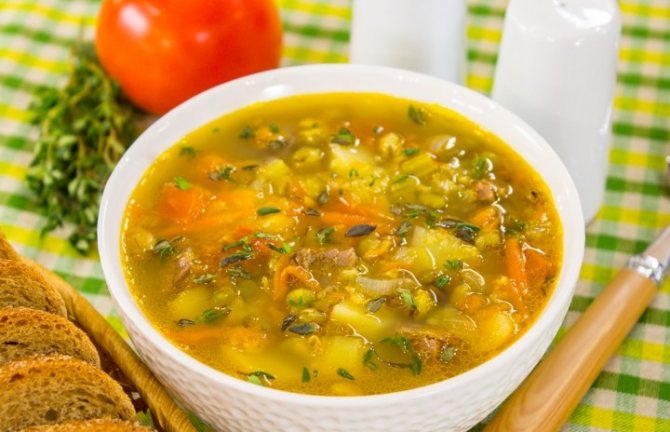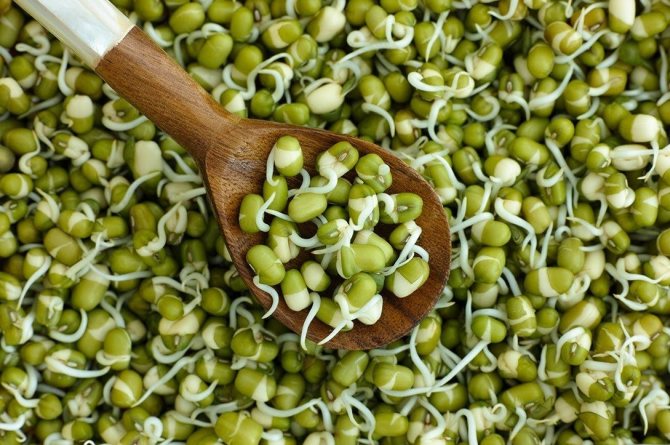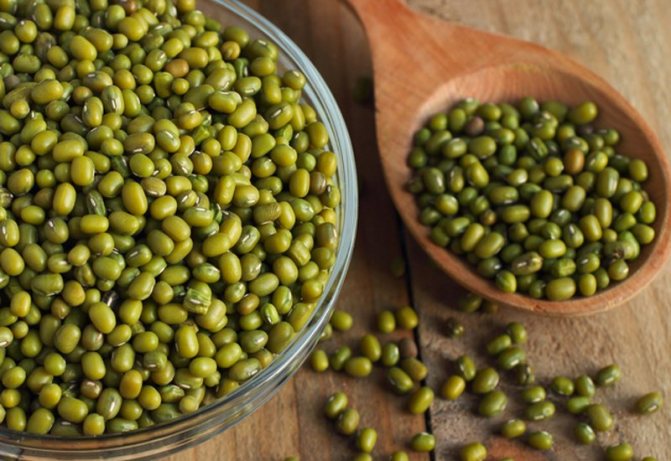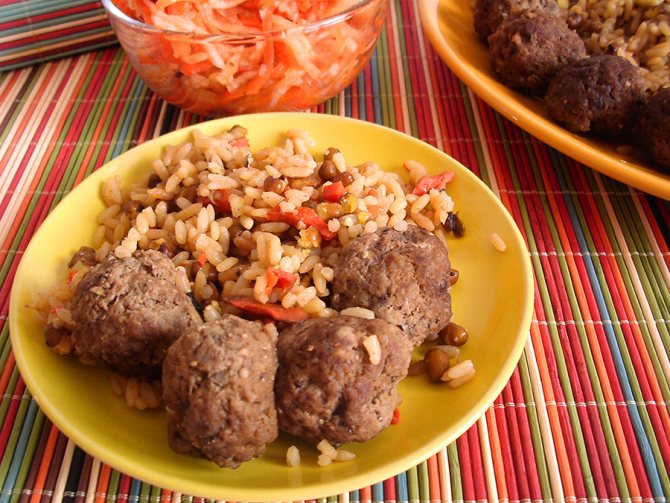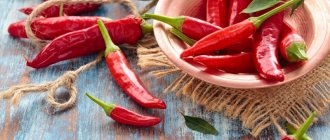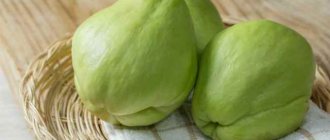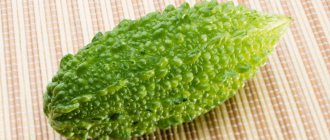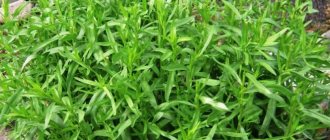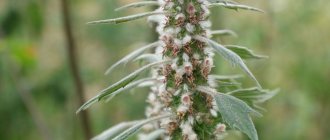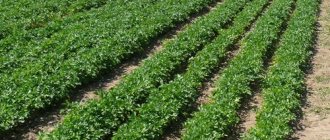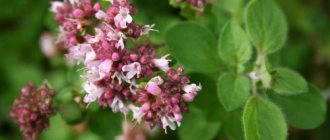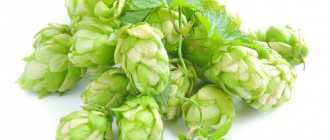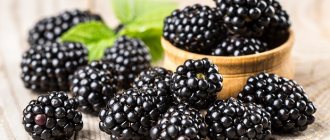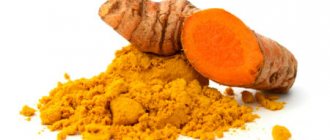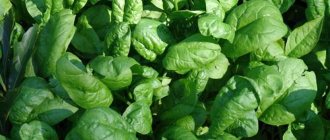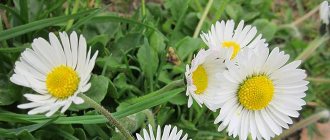Mung bean (mung bean) is a plant of the legume family, which is a source of easily digestible protein, phytoestrogens and protease inhibitors. The birthplace of culture is India. Today it grows in Southeast Asia, Uzbekistan, Korea, Japan, China, Turkmenistan. Harvesting occurs in June and November.
The beans are small, oval, green in color. Used in cooking as a side dish. Mung beans are eaten whole or starch is extracted from them, on the basis of which noodles are made. In addition, the beans are used for making pureed soups, salads, creams, and snacks.
Mung bean is a high-calorie product (323 calories per 100 grams), very useful for women's health. It maintains hormonal levels (which is especially important during menopause), inhibits the development of breast cancer. In addition, mung beans improve memory and vision, strengthen joints and bones, fight allergies and asthma, and have a beneficial effect on the state of the nervous system.
Mash is extremely popular in the cosmetics industry. The beans contain coenzyme, which stops age-related changes in appearance: the appearance of age spots, wrinkles, flabbiness.
Benefit and harm
Mung bean has diuretic, antiseptic, detoxifying properties. Interestingly, in ancient China, healers used "miracle beans" to cleanse the body.
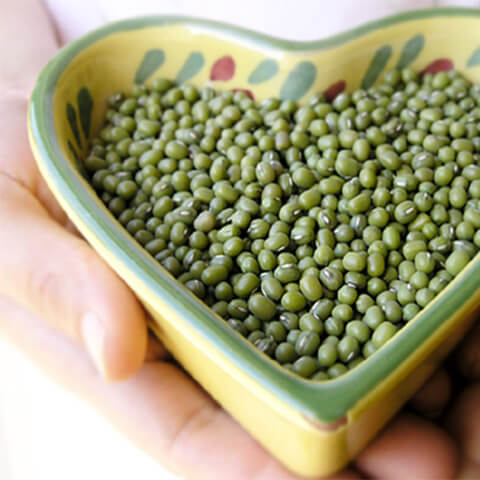
Advantages:
- reduces pores, nourishes, softens, brightens the skin (as a mask);
- strengthens the immune system;
- stimulates mental activity;
- improves visual acuity;
- stabilizes cholesterol;
- fights tumors (protease inhibitors);
- improves the hormonal background and psychological state of a woman during menopause, fights hot flashes (phytoestrogens);
- normalizes blood pressure, blood sugar;
- absorbs toxins, excess fat;
- increases the flexibility of arteries, veins;
- stimulates the production of collagen, elastin, hyaluronic acid, which give the skin a young, healthy, toned appearance (phytoestrogens);
- increases efficiency;
- regulates body temperature, thereby preventing heatstroke;
- normalizes metabolism;
- helps to curb hunger, reduces cravings for sweets.
Dr. Wang Haichao found that mung bean extract prevented sepsis. According to the experiment (on mice), it was confirmed that the survival rate of the group receiving the mung bean extract was 70%, relative to the control, in which it did not exceed 30%.
Mung beans are a plant-based alternative protein source. Interestingly, 100 grams of mung bean contains 23.5 grams of protein, and beef tenderloin - 18.6 grams, pork - 17.83 grams, boiled chicken - 22.6 grams, raw eggs - 12.6 grams. Therefore, mung can be substituted for meat 2-3 times a week, this will reduce the load on the digestive tract.
Legumes are a dietary product that is especially useful for diabetics, vegetarians, athletes, overweight people, heart and metabolic problems.
Contraindications:
- intolerance to the product;
- poor intestinal motility;
- diseases of the digestive system.
With excessive use, flatulence and dispersion may occur.
Beneficial features
Mash has useful properties:
- With regular consumption, blood cholesterol is reduced. The condition of the heart and blood vessels improves.
- The amount of sugar decreases.
- Vessels become elastic.
- Immunity is strengthened.
- Beans are a mild diuretic.
- Sprouted beans fight inflammatory diseases.
- Golden beans are included in the diet menu for those wishing to lose weight.
- Masha sprouts stimulate brain activity, strengthen memory.
It has been suggested that regular consumption of golden beans reduces the risk of cancer.
Chemical composition
Mung contains valuable vegetable protein, fiber, vitamins, minerals, protease inhibitors, phytoestrogens, which can fully replace meat.
Sprouted beans provide the greatest value for humans, since the concentration of nutrients in them increases 1.5 - 5 times.
Table number 1 "Nutritional value of mung bean"
| Components | Content in 100 grams of product |
| Calorie content of mung beans | 323 calories |
| Calorie content of mung bean sprouts | 30 calories |
| Carbohydrates | 46 gram |
| Starch and dextrins | 42.4 grams |
| Protein | 23.5 grams |
| Water | 14 gram |
| Alimentary fiber | 11.1 grams |
| Mono- and disaccharides | 3.6 grams |
| Ash | 3 grams |
| Fats | 2 grams |
Table No. 2 "Chemical composition of mung bean"
| Name | Nutrient content in 100 grams of product, milligrams |
| Vitamins | |
| Phylloquinone (C) | 9,0 |
| Ascorbic acid (C) | 4,8 |
| Pantothenic acid (B5) | 1,91 |
| Thiamin (B1) | 0,621 |
| Tocopherol (E) | 0,51 |
| Pyridoxine (B6) | 0,382 |
| Riboflavin (B2) | 0,233 |
| Niacin (B3) | 2,3 |
| Folic acid (B9) | 0,140 |
| Macronutrients | |
| Potassium | 1246 |
| Phosphorus | 367 |
| Magnesium | 189 |
| Calcium | 132 |
| Sodium | 41 |
| Trace elements | |
| Iron | 6,74 |
| Zinc | 2,68 |
| Manganese | 1,035 |
Mung bean is eaten boiled and sprouted. With regular use, beans accelerate the recovery of patients suffering from infectious and inflammatory diseases (laryngitis, sinusitis, tracheitis, bronchitis, rhinitis).
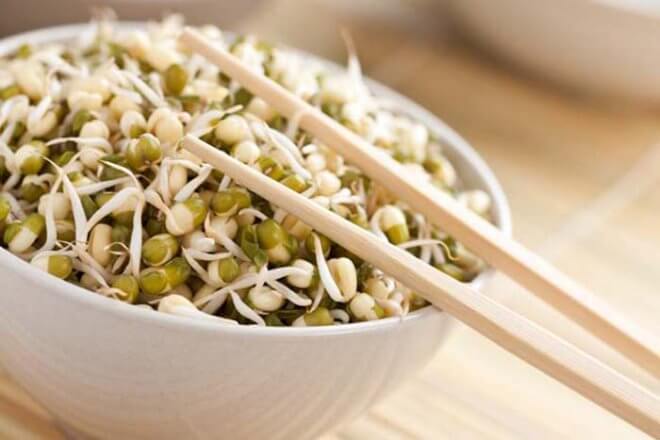

The mung bean tastes like beans with hints of walnut. It goes well with rice, lamb, spinach, peas, chickpeas. In India, beans are used to prepare a national dish - thick mashhurd. In addition, nutritious casseroles, snack pies, vegetable cutlets, stews, and mashed soups are obtained from mung bean.
How to use sprouted mung bean?
To enrich your daily diet with vitamins and minerals, you can eat a couple of tablespoons of raw sprouted mung bean. It tastes like green peas and has a pleasant crunchy texture.
Sprouted golden beans can also be used to make a wide variety of dishes. Sprouts can be used to make salads, cocktails, side dishes, and even baked goods. Let's look at a few recipes using mung bean sprouts.
Recipe number 1
Vegetable salad with prawns and mung bean sprouts
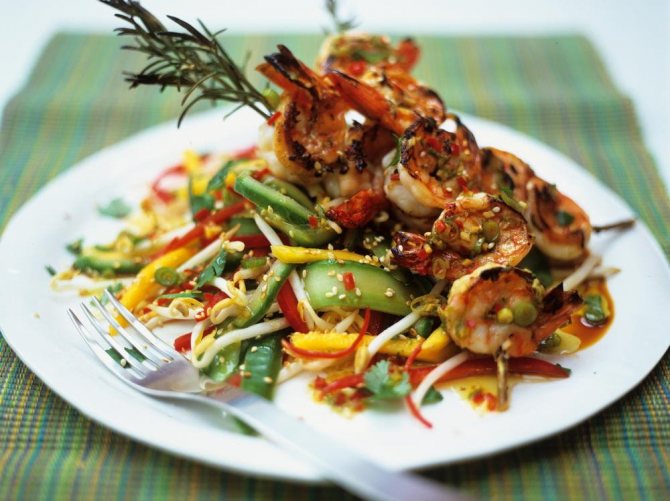

For the sauce:
6 Ingredient Steps
- soy vinegar 40 ml
- rice vinegar 2 tbsp l.
- sesame oil 2 tbsp l.
- rice wine 1 tbsp. l.
- sugar 1 tsp
- salt 0.5 tsp
- Rinse the shrimps and peel them off.
- Fry peanuts in a dry frying pan and peel them.
- Peel the vegetables, cut into thin strips and stir.
- To prepare the sauce, mix all the indicated liquid ingredients, add sugar and salt.
- Put the mixture of vegetables on a plate, sprinkle the sprouted mung bean.
- Spread the shrimps on the surface of the salad, pour the prepared dressing over the dish.
Recipe number 2
Vitamin cocktail with mung bean sprouts
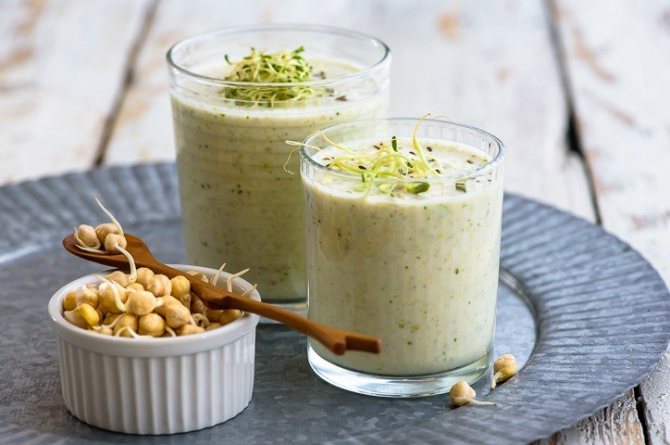

All of these components must be interrupted in a blender until a thick, aromatic drink is obtained.
Recipe number 3
Cooking methods
Mung beans are widely used in boiled form in Asian cooking. Mung beans are used unpeeled, shelled, both whole and chopped. Starch is extracted from beans, which is used for the production of pasta, jelly, ice cream, drinks, creams. In Uzbek cuisine, vegetarian pilaf (mash-khurda or mash-kichiri) is prepared from unpeeled mash and rice. Beans combined with chicken, beef, seafood, peanuts, sauces, vegetables create hearty, delicious salads.
Deep-fried mash is a traditional oriental snack.
How do I cook beans?
- Rinse the cereal under cold water.
- Soak for 2 hours (or overnight). The longer the beans are saturated with moisture, the softer they will be in the finished dish and the less time it will take to cook them.
- Put the cereals on fire (at the rate of 1 part mung bean to 2.5 parts water), cook for half an hour over low heat. The porridge is salted 10 minutes before the end of cooking. To improve the taste, you can add butter or sunflower oil, sautéed onions, carrots, mushrooms, hot spices (asafoetida, curry, chili powder, coriander, garam masala) to the mung bean.
How to sprout beans?
First of all, it should be noted that sprouted crops are a powerful energy resource.
The nutritional value of such products increases 2 to 10 times. Germination increases the concentration of biologically active substances in the product and reduces the amount of phytates that impede their absorption.
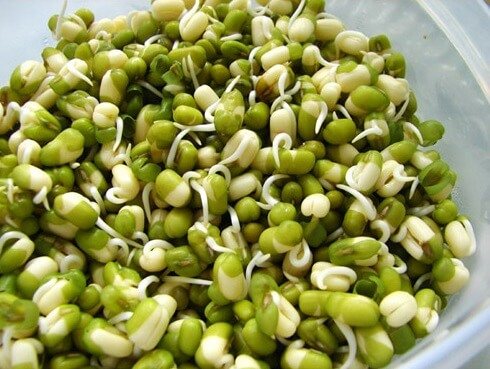

Beans with sprouts can be eaten raw or cooked: fry in oil. For growth, special conditions are required, which imply the alternation of modes of light and darkness. The sprouts appear in 3 - 5 days and are ready to eat in a week. Provided that 4 hours a day they are in the light, the rest of the time - in the dark.
So, before germination, rinse, sort out the beans, get rid of broken grains and litter. Soak them in water overnight. In the morning, rinse the mung, transfer to a glass jar, cover it with gauze, tighten with an elastic band. After that, turn the container with the beans over and place in a bowl of water, at a 45-degree angle. The grains must be saturated with moisture. The next step is to put the beans in a dark room. Rinse in the same way as it dries.
It is recommended to eat mung bean when the size of a bean with a sprout is at least 1 centimeter. It is in this form that the beneficial properties of the product are revealed in full. However, do not delay germination, otherwise, instead of fresh young white-yellow shoots, you will get brown, tasteless shoots. It is better to eat sprouted mung bean immediately, the maximum shelf life is 2 days in the refrigerator, in gauze.
Green bean skins contain natural plant fiber to aid digestion, so do not cleanse it before consuming it.
Interestingly, the content of vitamin C in seedlings increases 7 times compared to seeds (and amounts to 42.4 milligrams), antioxidants - 5 times (on the fifth day of cultivation it is 517 milligrams), fiber - by 1/3 part (reaches 8.9%).
The active components of mung seedlings activate the production of hemoglobin, participate in the construction of phosphatases, carry a powerful charge of energy, relieve stress, have antimicrobial activity, and normalize metabolism. Bean sprouts help in the fight against arthritis, asthma, allergies, atherosclerosis, diabetes, menopause, and hypertension. In Chinese medicine, they are used as a cooling food, cooling the body, cleansing the skin, and preventing ARVI diseases.
Any mung bean seeds are suitable for germination, since they are not subjected to thermal, chemical treatment. The main condition is that the grains should not be dark or wrinkled.
Use in cosmetology
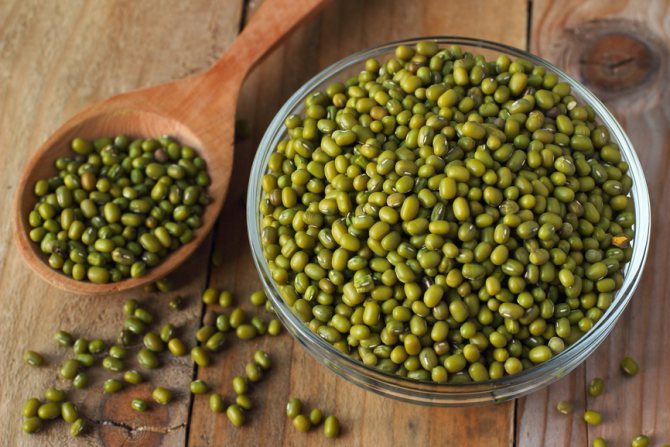

Mung beans have an antiseptic effect, slow down age-related changes. Due to these properties, they are used in cosmetology. The daily use of sprouts in food rejuvenates the skin, smoothes small wrinkles, removes unnecessary pigmentation.
Grinding grains into powder, make cleansing and rejuvenating masks. It is mixed with a small amount of any tonic and applied to the face for 15 minutes, like a mask. Then the remnants of the mask cleanse the skin, like a scrub. This procedure deeply cleanses the pores and evens out the tone.
The mung beans contain copper, which is good for hair.Therefore, useful masks are made from crushed raw materials that improve the structure of the strands. To do this, powdered beans are mixed with green tea if the hair is oily. For dry strands, the powder is diluted with olive oil. Additionally, you can enter other useful ingredients - cottage cheese or egg yolk. This mass is distributed over dry, unwashed strands for 15 minutes. After that, wash off with shampoo.
Recipes
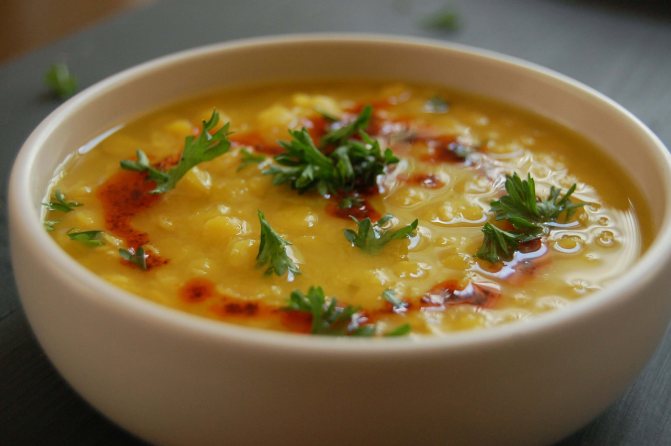

"Dal"
Ingredients:
- mung bean - 200 grams;
- butter - 50 grams;
- grated fresh ginger - 5 grams;
- cinnamon - 1 stick;
- cumin - 7.5 grams;
- water - 1.9 liters;
- garlic - 2 cloves;
- red pepper - 2 pods;
- bay leaf - 2 pieces;
- turmeric - 5 grams;
- vegetables - 275 grams;
- salt.
Cooking principle:
- Pour water into a saucepan, bring to a boil. Add bay leaf and cinnamon.
- Introduce mung bean into boiling water, cook for 20 minutes over low heat.
- Peel the vegetables, chop finely, mix with butter, turmeric. Put the resulting mass into the mung bean. Cook until the beans are tender. If the consistency of the soup is too thick, add a little water.
- Preheat a skillet, sauté the dried paprika and cumin seeds, and when dark, add the garlic and grated ginger.
- Pour seasonings into dal, cook for 5 minutes.
- Add sour cream to the dish before serving.
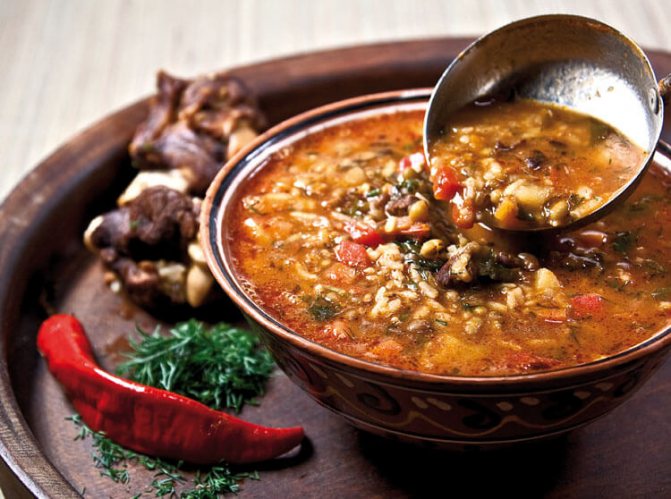

"Mashhurda"
Ingredients:
- round grain rice - 200 grams;
- mutton fat - 100 grams;
- carrots - 2 pieces;
- tomatoes - 3 pieces;
- mung bean - 200 grams;
- whole barberry - 15 grams;
- cilantro - 4 branches;
- boiled water - 3 liters;
- beef bones - 400 grams;
- lamb pulp - 400 grams;
- vegetable oil - 60 milliliters;
- onions - 2 heads;
- a mixture of red hot pepper, cumin seeds and coriander - 15 grams;
- salt.
Cooking principle:
- Cut the fat and meat into small pieces.
- Peel the onions and carrots. Cut into strips.
- Scald the tomatoes with boiling water, remove the skin, chop.
- Rinse the mash and rice under water, fold them onto a sieve. Do not mix cereals together.
- Heat oil in a cauldron, fry meat and bones over high heat until a brown crust appears.
- Add fat (it should become slightly transparent), then onions (until a yellowish hue appears), tomatoes. Stir in the barberry and spice mixture. Cook for 5 minutes.
- Put the carrots in a cauldron, add mung bean, pour in water. Bring the contents to a boil, screw up the heat, cook under a closed lid for at least half an hour. Cook the dish until the beans burst.
- Add bay leaf and rice to the contents. Cook for another 25 minutes, season with salt. After cooking, leave the dish on the stove for 20 minutes.
- Serve mashhurd with katyk or thick yogurt. Decorate with cilantro, basil.
Interestingly, in Uzbek fried soups, spices are added at the stewing stage. Often they are introduced after adding vegetables (in particular, tomatoes), when they are actively releasing the juice.
Sprouting green beans
Ready-made sprouts are sold in vegetarian stores and healthy food stores. But not everyone has the opportunity to visit such a store. Therefore, in most cases, green beans are sprouted on their own.
Before germination, the beans are sorted out and all damaged grains are removed. Then the selected seeds are washed under running cold water and put on a sieve or colander to drain excess liquid. At the bottom of a flat dish, put gauze folded in several layers and moistened with water. The washed beans are poured onto it in one layer. Cover the top of the grains with a second piece of wet gauze.
The plate is placed in a warm place for the seeds to germinate. Their condition is checked periodically. If the gauze is dry, it is moistened again. The first shoots hatch in a day. They are given a few more days to germinate and then eaten.
On a note!
Sometimes mung bean sprouts are bitter. To get rid of the unpleasant aftertaste, they are scalded with boiling water.
Growing, care, storage
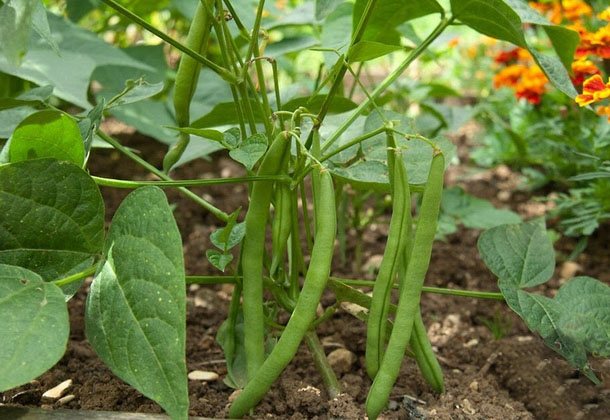

Since mung bean is a thermophilic crop with a long growing season, it is grown in seedlings in all regions except the southern ones. Plants grow well at hot temperatures - around + 30 ... + 35 ° C. For colder areas, it is better to choose cold-resistant varieties. Seedlings are planted in open ground when it warms up to 15 ° C. The temperature is measured at a depth of 10 cm.
The place for the culture is set aside in a sunny area, which is well blown by the wind. The soil should have a loose structure, a good fertile layer and a neutral reaction. These indicators can be ensured by preliminary preparation of the site. Lime is added to acidic soils, peat - to alkaline soils. The latter also perfectly loosens the soil. For digging, organic matter and mineral complexes are introduced, taking into account the acidity. The choice of the most suitable type of feeding will depend on this indicator.
In arid regions, beans require watering. After it, loosening and weeding are carried out. On average, the plant grows up to 1.5 m in height, it will not be superfluous to install a support. If the seedlings were planted in fertile soil, the culture does not need additional nutrition.
How to germinate mung bean
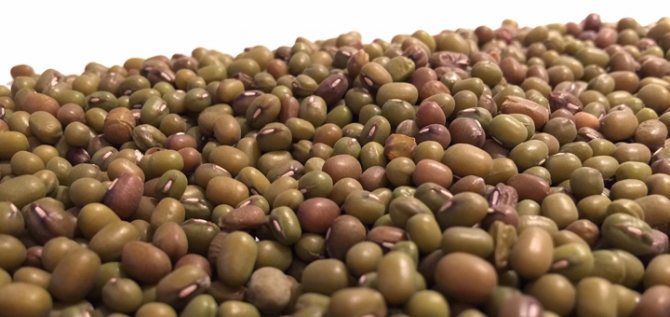

Buying ready-made bean sprouts is easier. But not every store has them on sale.
Self-germination scheme:
- Beans of the same shape and size are selected, and then washed with cold water.
- The fruits are discarded in a colander to remove all the liquid.
- Wet gauze folded in several layers is spread on the table.
- Beans are spread over it and covered with the same material.
- The gauze is kept moist at all times.
After 2-3 days, mung bean germinates.
Important!
If the sprouts are bitter, they are doused with boiling water to eliminate the unpleasant aftertaste.
Storage methods
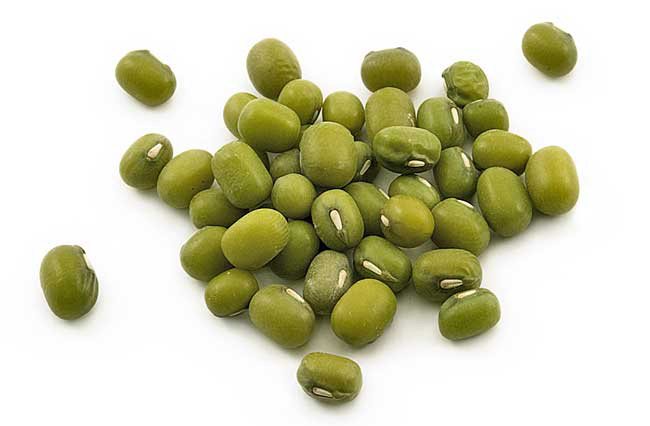

Ripening of golden beans is uncommon. Harvesting is carried out in several stages. Torn dry pods are laid out in the shade for ventilation, and then the shutters are removed. The beans are sent into cloth bags. For protection from bugs, a clove of garlic or a bay leaf can be dipped into each purse.
When the growing season comes to an end, all green pods are collected from the plants. If the beans are not poured, then they are divided in half and frozen. Slightly unripe grains are threshed and sent to the freezer.
What is this plant
Golden beans belong to a separate genus of Vigna. Usually, small ripe green beans of the Mash variety are called golden beans, as they change color after cooking. The fruit grows in Asia. On the territory of the Middle Lane, this variety of beans is not so common. In Asia, the fruits are often called green beans. Various dishes are prepared from them, and fruits are also added to medicines.
Ripe beans have a rich and specific flavor, which is why this plant variety is an essential ingredient for a wide variety of dishes.
Planting material
The first step is to find good planting material. The best option is to stock up on them immediately after harvest in local fields. Or ask your relatives or friends to send you seeds from those regions where it is successfully cultivated. But since in our fields mung bean, due to its southern origin, I never met, the only option left for me was to take mung seeds sold in the store.
For planting, you always need to select intact, strong grains, which is not difficult to do in the case of mash, since there are thousands of these seeds in a half-kilogram bag.
Mung belongs to the thermophilic, and therefore capricious cultures. To grow mung bean, you have to choose a sunny place. A bed for a bean plant has been prepared since autumn. The soil is freed from weeds, plant residues of wilted crops.It is good if tomatoes, potatoes, root crops grew in this area - these are the optimal predecessors for mung bean. In autumn, the soil should be fertilized with wood ash, watered and left until spring.
Immediately before planting the mung bean, you need to dig up the soil well. It is best to process the site with a walk-behind tractor. It will make the soil loose, permeable to water and air. The rest of the mung is not particularly picky about the composition of the earth. It will grow on both light and heavy soils with a neutral reaction.
Planting material can be bought in a store, assembled by yourself, or brought from a trip to India, China, Thailand. If possible, ask friends or relatives from eastern countries where golden beans are successfully cultivated to send you the seeds of the plant. Beans should be stored in a glass container with a tight-fitting lid. To prevent bugs from getting in the beans, add garlic or dried mint leaves to the jar.
Attention! When planning to grow mung bean, stock up on strong, undamaged seeds.
Correct selection
To choose the right beans for planting, and then get a bountiful harvest, you need to be guided by the following recommendations:
- Check packaging (all contents must be visible).
- The grains should be solid, with a glossy skin and a green color.
- Small beans of the same size are used.
- Skin damage is not allowed.
It is the small beans that are used as they grow much faster.
Sowing seeds
To plant a heat-loving plant, wait until the ground warms up to 12 ... 15 ° C and the threat of frost return passes. Usually the favorable period occurs at the end of May. After that, start sowing mung bean:
- In the treated and prepared soil, make grooves 3 cm deep if the soil is heavy and 5 cm if the soil is light. The distance between the rows is 50-70 cm.
- Place mung bean seeds in the grooves. Maintain a distance between the seeds. It should be 12-20 cm thick. Planting thickening provokes the development of various fungal ailments.
- Level the ground and water it abundantly. When moisture begins to slowly absorb into the soil, this means that there is already enough of it.
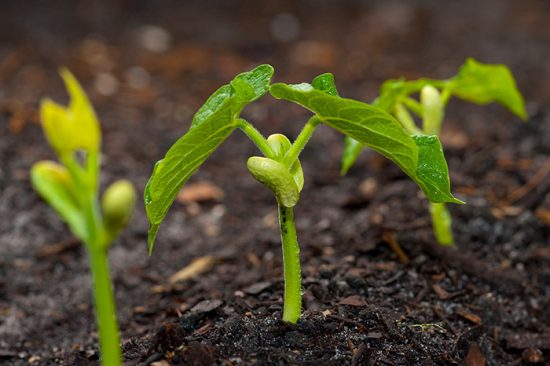

- To create a favorable microclimate, surround the mung bean beds with corn or any other tall crop. Your task is to close the landings from the northern, eastern and western sides.
- Mung is a self-pollinating crop, so plant several different varieties nearby if you wish.
We make grooves in the ground about 3 cm deep and place seeds in them at a distance of 20-25 cm from each other. Mung is a rather sprawling plant, so for its full development, we leave the distance between the grooves about 40-50 cm.
You can't plant mung bean too deep
After sowing the seeds, fill in the grooves and level the ground. Watering the plot is done slowly, in the direction from one edge to the other, until the land on the opposite edge has time to absorb moisture. In this case, it is not necessary to soak the seeds before planting.
After about a week and a half, seedlings appear. They climb out of the ground slowly, but just as amicably, like those of chickpeas.
Masha seedlings

